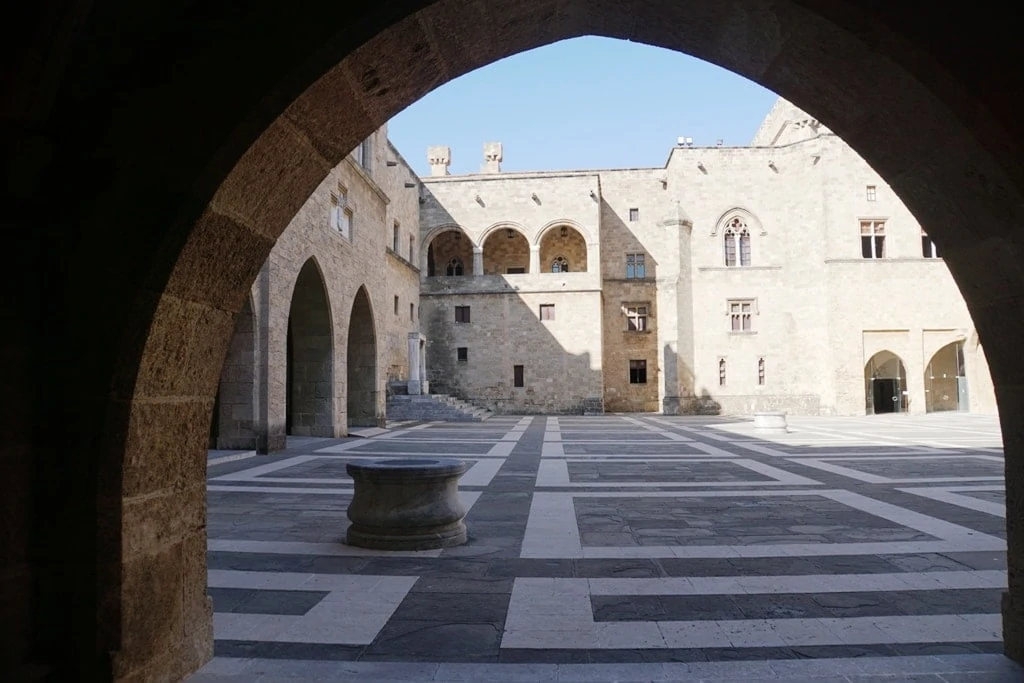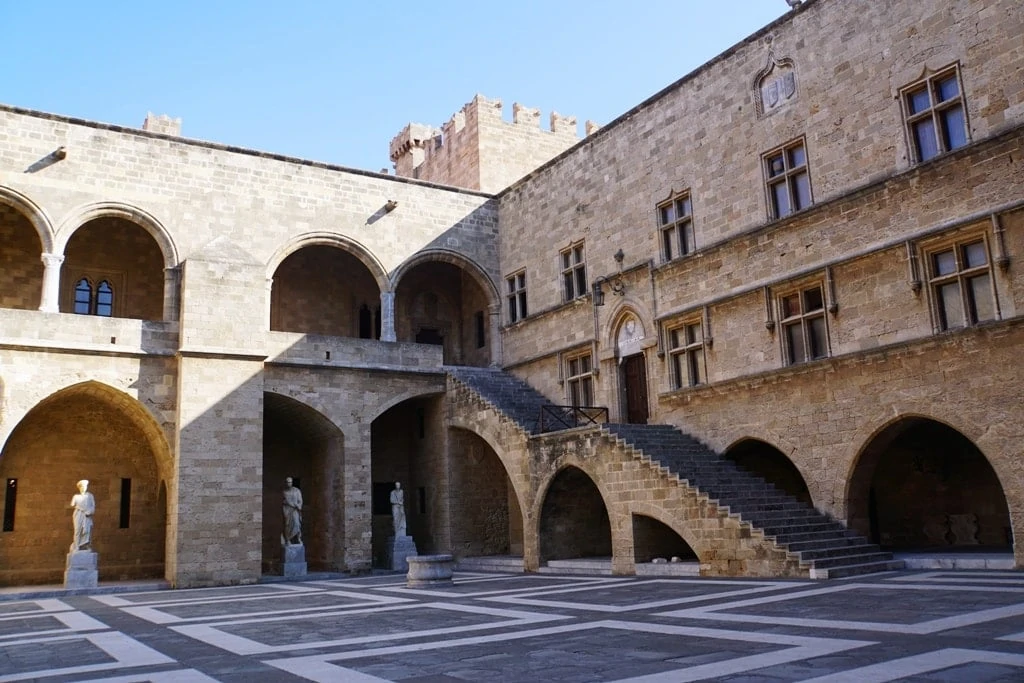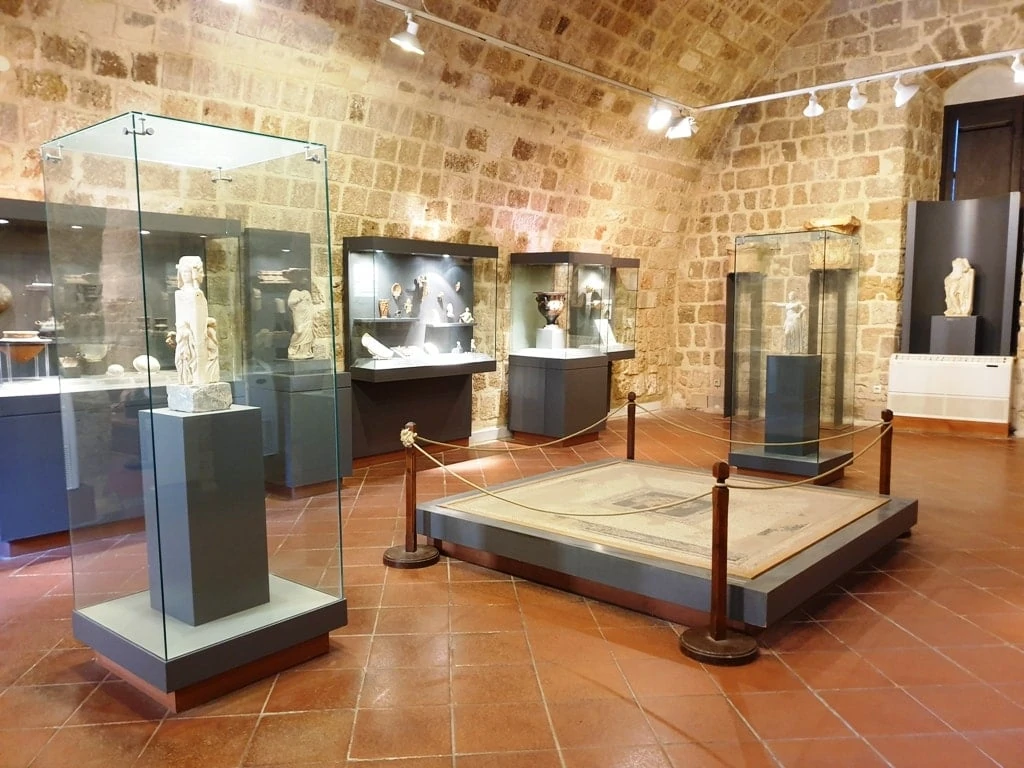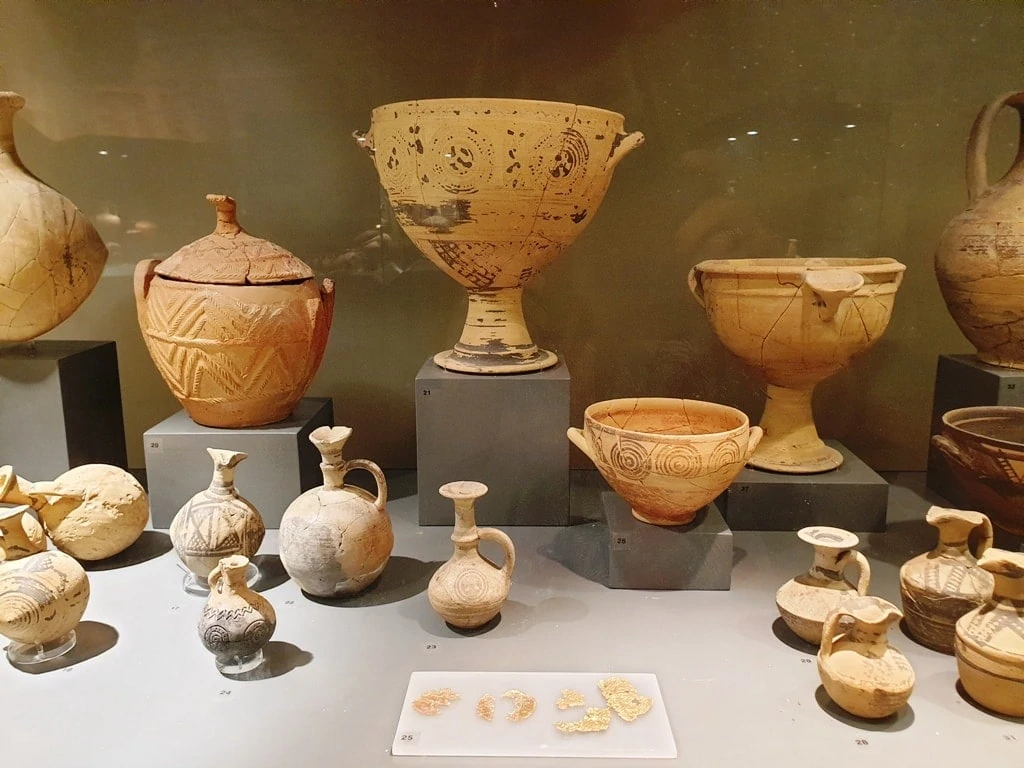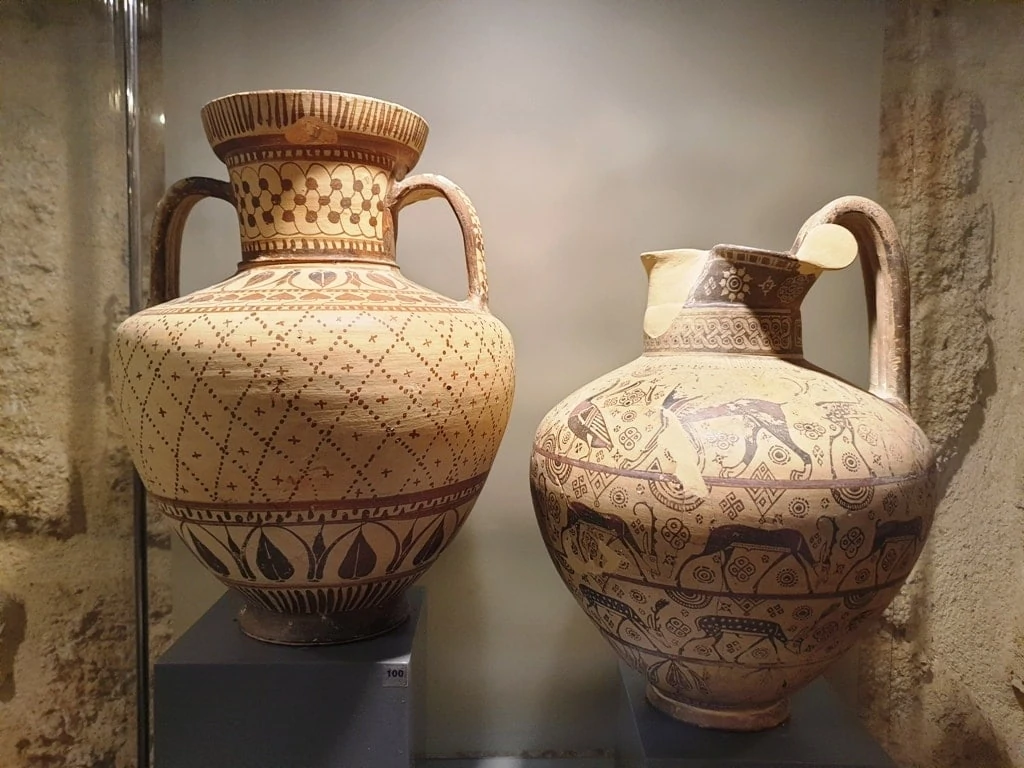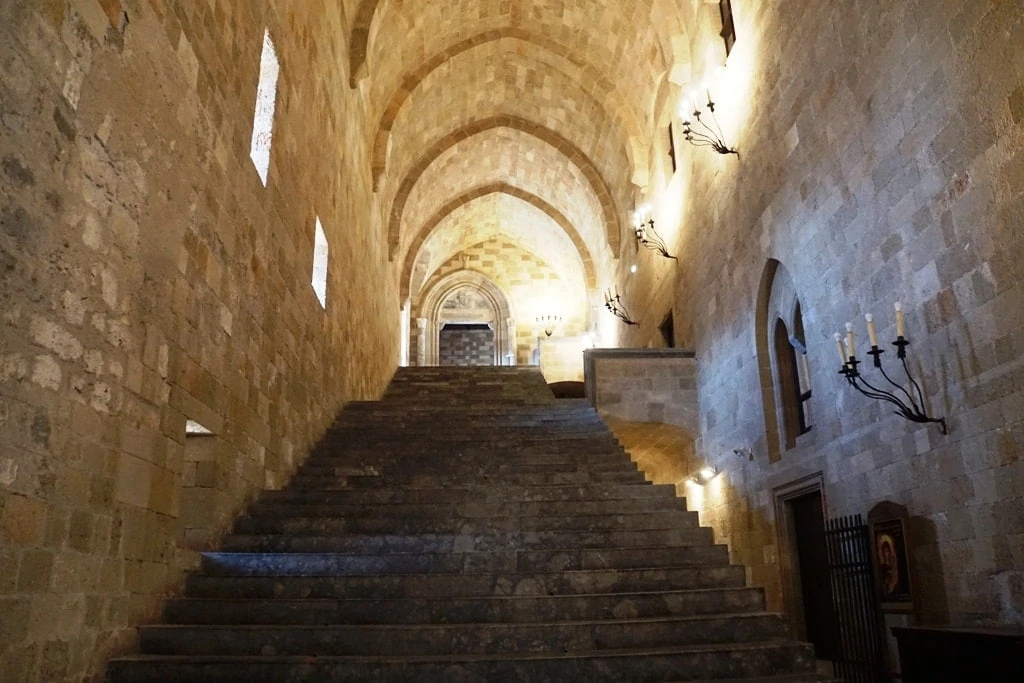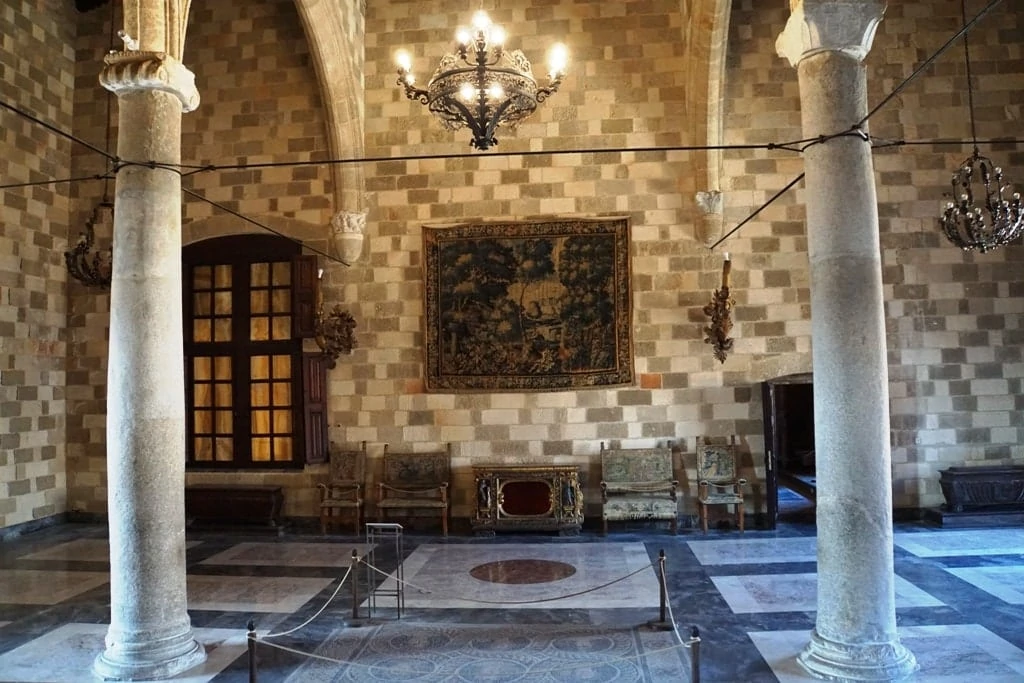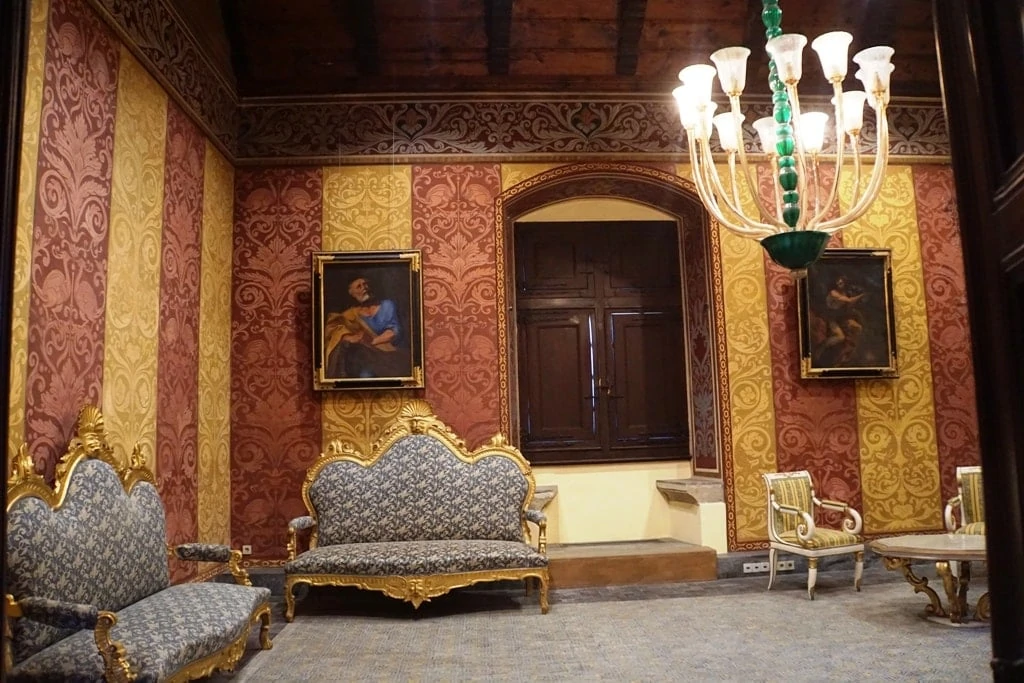Often called the Kastello, the Palace of the Grand Master of the Knights of Rhodes is a castle at the highest point of the medieval city of Rhodes. The city of Rhodes is on the island of Rhodes in Greece.
Originally built as a fortification, the Palace of the Grand Master played an important role in the defence of Rhodes throughout its history.
Visitors today can tour the castle, seeing parts of the structure built during different time periods and enjoying the museum collections housed there.
The castle reflects the fascinating history of the island and is a rare example of Gothic architecture in Greece.
History of the Palace of the Grand Master of the Knights of Rhodes
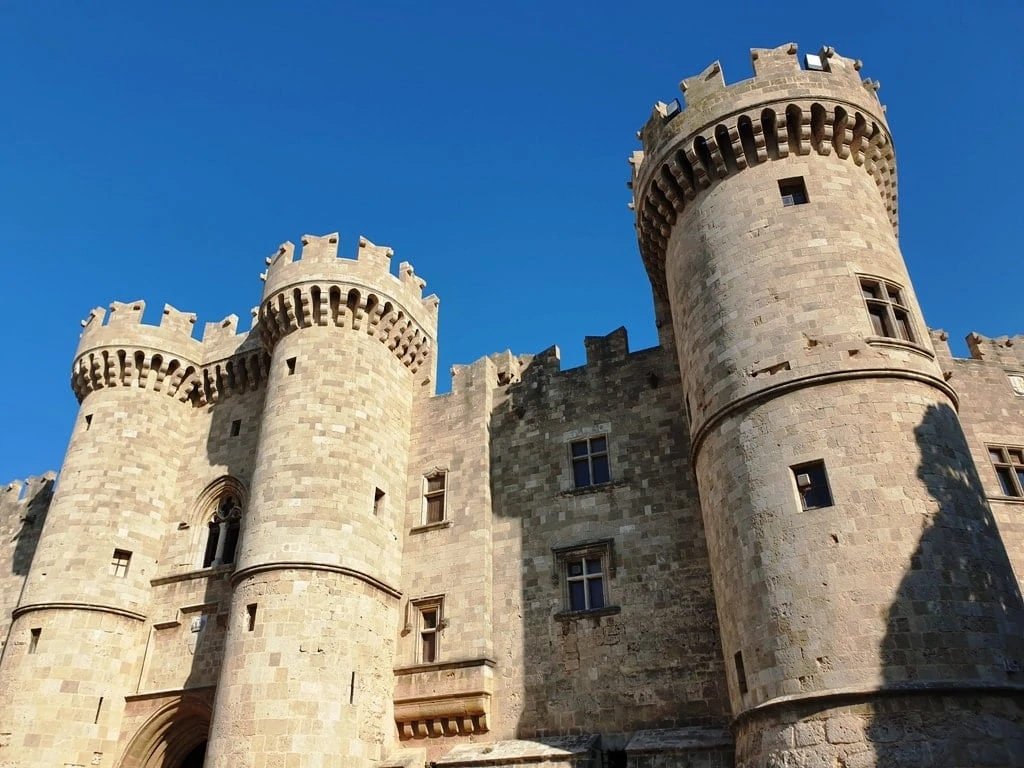
Information about this historical site goes back to the ancient world. Before the palace was built, its site was the home of the ancient temple of the Sun-god “Helios.”
Helios was a minor deity in Classical Greece, but became more prominent in late antiquity and was made a primary deity by emperor Julian (r. 361-363 CE).

Eventually, the temple fell into disrepair and the Byzantine empire built a citadel on its foundations in the late 7th century.
In the 14th century, the Knights Hospitaller occupied Rhodes and other Greek islands. The Knights Hospitaller, also called the Order of Knights of the Hospital of Saint John of Jerusalem, were a Catholic order originally devoted to caring for sick or poor pilgrims in the Holy Land.
After the first crusade, the knights became more military in nature, concerning themselves with the care and defence of the Holy Land.
When Islamic forces conquered the Holy Land, the Knights Hospitaller made Rhodes their headquarters. They repaired and significantly modified the 7th-century Byzantine citadel, turning it into an administrative center and a palace for the Grand Master who led their order.
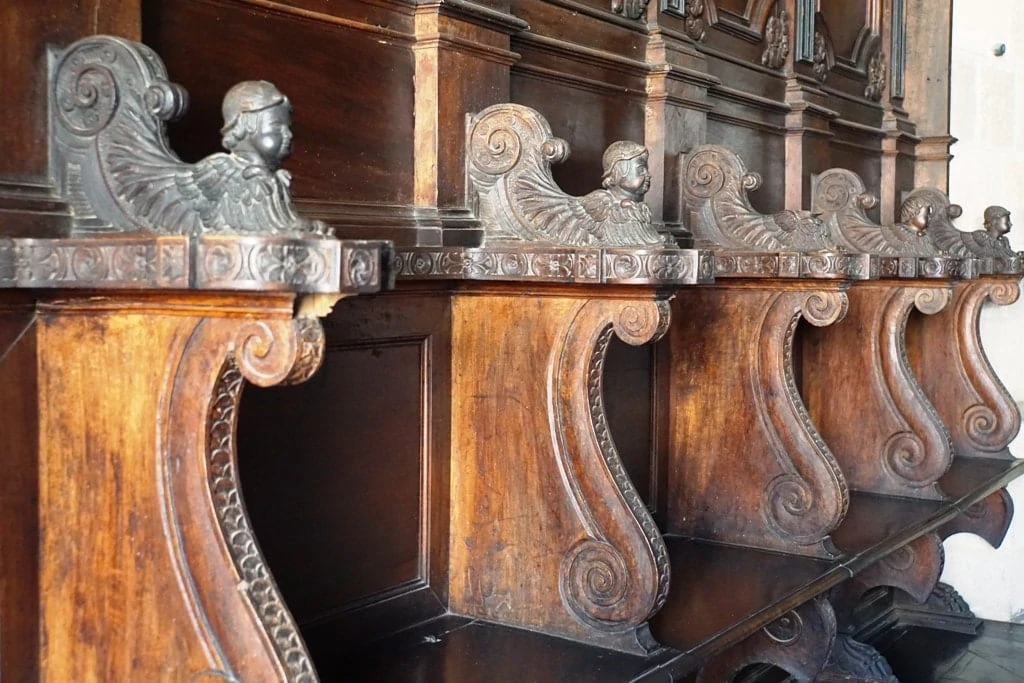
They also built a variety of other fortresses and fortifications on the island of Rhodes. The palace had to be repaired again after suffering damage in the 1481 Rhodes earthquake, which killed an estimated 30,000 people.
In 1522, the Ottoman Empire captured the island of Rhodes. Although they sieged the palace, they did not significantly damage it. After taking over, the Ottomans turned the palace into their command center and fortress, even using it as a prison.
The Ottomans controlled the island of Rhodes for nearly 400 years. The castle was almost completely destroyed in 1856 when lightning struck ammunition stored in the nearby Church of St. John. It remained in ruins until Italy occupied the area during the Italo-Turkish war.
During the Italian rule of Rhodes, architect Vittorio Mesturino repaired damage to the palace and reconstructed what had been destroyed using drawings of the original building.
The castle then became a holiday residence for Italian king Victor Emmanuel III and, later on, the fascist dictator Benito Mussolini.
In 1948, as part of the aftermath of World War II, Italy ceded Rhodes and the rest of the Dodecanese Islands to Greece. The Greek government turned the palace into a museum.
Visiting the Palace of the Grand Master of the Knights of Rhodes
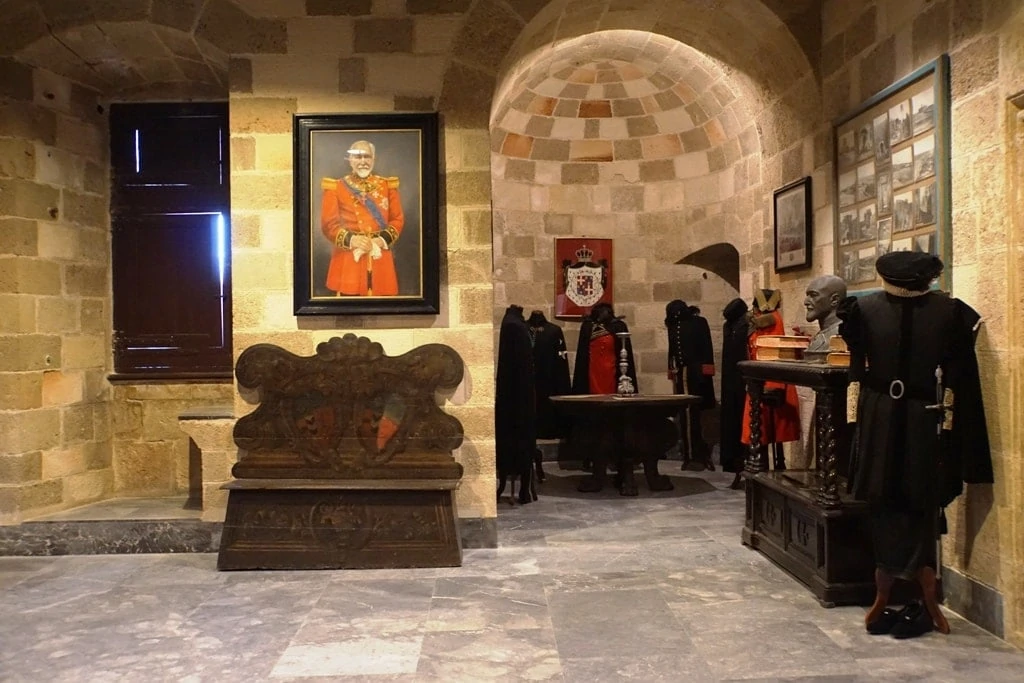
The government of Greece still owns the Palace of the Grand Master of the Knights of Rhodes. For a small fee, tourists can visit the castle’s interior courtyard and a portion of the rooms inside the castle.
You can purchase a ticket to visit only the palace or buy a combined ticket for entry to nearby museums as well. Visiting hours vary between high tourist season and the offseason.
The palace is a rectangular (but almost square) structure of about 6,000 square meters, with impressive, round towers. While beautiful, the palace is still a stronghold surrounded by a triple circuit of walls.
The bastion on the west side of the palace still has cannons on display. Upon entering through a large arched doorway in the south facade, visitors will first see the large courtyard.
The courtyard is not grassy, but covered in decorative stone, and lined with shady arcades. It also houses Greek and Roman statues excavated from the Odeon of Kos.
Inside the castle, visitors enjoy beautiful, though simple, staircases and impressive rooms that display collections of historical artifacts. Some of the stunning rooms inside the castle include the Chamber of the Nine Muses, the Chamber of Colonnades, the Grand Reception Hall, and the Music Room.
The Margaritae, or rooms used as the private chambers of the Grand Master, can also be viewed. There is a small chapel next to the grand staircase that was added to the palace by the Italians in the 20th century.
Some areas of the castle contain collections of early modern jewels, weapons, books, and art. Other collections displayed include medieval costumes, beautiful carved furniture, and hand-woven textiles.
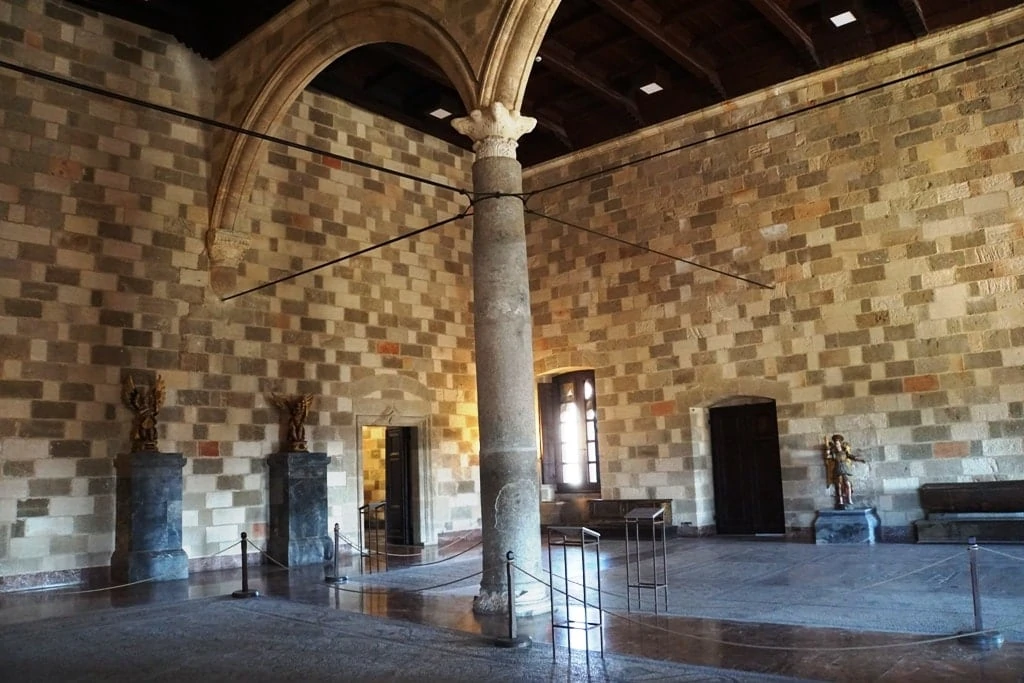
Ancient mosaics, including a famous depiction of Medusa from the 2nd century BCE, adorn the floors throughout the building. These mosaics are not original to the castle but were also brought in from Kos Island.
Since becoming a museum in the mid-20th century, the palace has attracted millions of tourists and even hosted a meeting of the European Economic Community in 1988. It is also a UNESCO World Heritage Site.
Tickets for the Palace of the Grand Master
Full: €8, Reduced: €4
Special ticket package: Full: €10, Reduced: €5
Valid for the following: Grand Masters’ Palace, Archaeological Museum, the church of Our Lady of the Castle and the Decorative Arts Museum
Free Admission: 6 March, 18 April, 18 May, last weekend of September
Opening Times for the Palace of the Grand Master
Winter: 1.11.2019 – 31.3.2020
Wednesday to Monday: 08:30 – 15:30
Tuesdays CLOSED
Summer:
Daily 08:00 – 20:00
Closed: 1 January, 25 March, 1 May, Easter Sunday, 25 December, 26 December

